Pasta Amatriciana
Amatriciana is one of the four Roman pastas (along with Cacio e Pepe, Carbonara and alla Gricia). It’s the only one of the four to use tomato product.
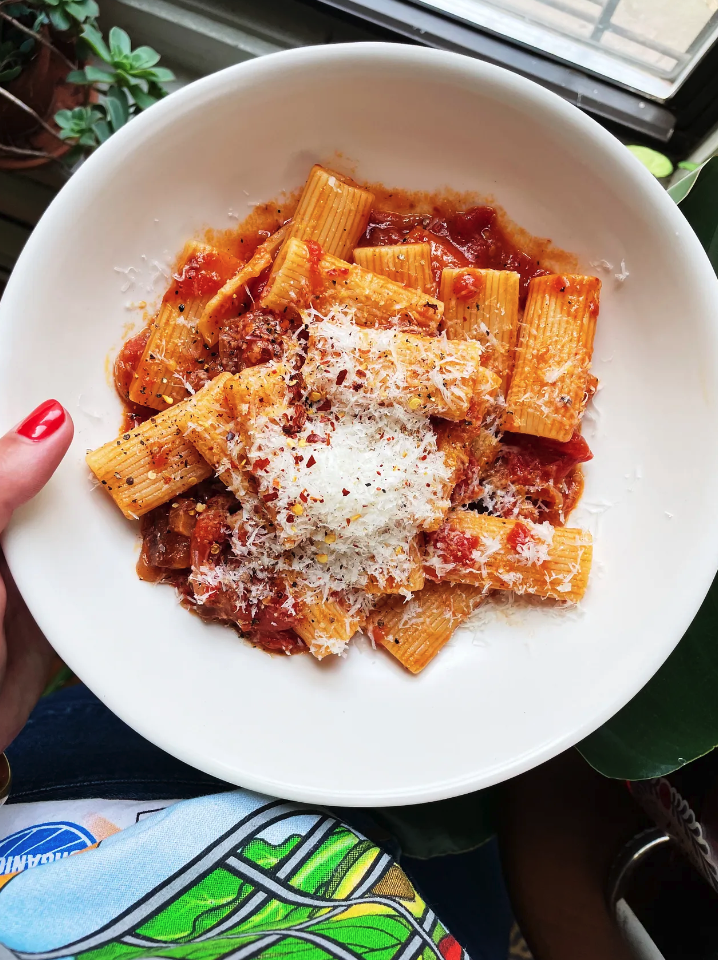
YIELD — 4 servings
Amatriciana is one of the four Roman pastas (along with Cacio e Pepe, Carbonara and alla Gricia). It’s the only one of the four to use tomato product, and in my brain, shares most of its similarities with alla Gricia in that the backbone of the pasta is good, thick pieces of cured pork (typically guanciale, which is cured pork jowl), relies on a bit of heat (black pepper for the Gricia, crushed red pepper flakes for the Amatriciana) and is finished with hard, salty cheese.
Remember when making this that the point is not a “Sunday Sauce/Spaghetti Marinara” end result when it comes to the sauciness, but more a nicely coated piece of pasta to nibble on between bits of rendered pork. Depending on your beliefs about this dish, the pork can be large hunks of crisped meat, or thin pieces of rendered, silky fat. I’ve had it multiple ways and personally prefer the larger hunks, barely crisped on the outside, chewy and fatty on the inside.
*The garlic clove at the end was a personal request from David, and I would be remiss to not reiterate how non-traditional that move is, but a birthday request is a birthday request. Leave it out if you like.
Ingredients
- 2 tablespoons olive oil, plus more if you like
- ¼ pound guanciale or pancetta, cut into ½” cubes
- 1 small red onion, thinly sliced
- Kosher salt
- Freshly ground black pepper
- 1/2 teaspoon crushed red pepper flakes, plus more
- 1 28 oz. can whole peeled crushed tomatoes, or whole peeled tomatoes, crushed
- 12 oz. rigatoni, bucatini, spaghetti or honestly, whatever shape you like
- 1 clove garlic, peeled and finely grated or chopped (optional)
- Pecorino romano, for grating
Preparation
- Bring a large pot of salted water to a boil. Heat 2 tablespoons olive oil in a large skillet over medium–low heat. Add the guanciale and cook, stirring occasionally, until most of the fat has rendered and the guanciale is lightly golden brown, 10-15 minutes (prioritize rendering the fat rather than crisping the meat).
- Increase heat to medium–high and add onions. Cook, stirring occasionally, until onions are tender, lightly fried on the ends and on their way to being a little frizzled (not jammy or caramelized, more like fried and still somewhat intact), 5–8 minutes. Add 1/2 teaspoon crushed red pepper flakes, letting them toast in the rendered fat for 30–60 seconds or so.
- Add tomatoes, season with salt and pepper, and reduce the heat so the sauce is moving at a gentle simmer. Cook, stirring every so often for 15–20 minutes, or until the sauce has thickened to your liking. Remove from heat and set aside while you cook the pasta.
- Cook pasta according to the box instructions to a nice al dente, 8–10 minutes (timing will depend on the type and brand of pasta). Drain, reserving about 1 cup of pasta water (alternatively, leave pasta in the water and remove with a slotted spoon, leaving the pasta water behind).
- Add the pasta and ½ cup pasta water to the sauce and cook, tossing frequently, until pasta is just past al dente and the sauce has thickened gorgeously, 3–4 minutes. You can always add more water if you like to make it even saucier, personal choice here. Remove from heat and add raw garlic, if using. Toss to combine and warm through to take the edge off a little. Give it a taste and season with salt, pepper and more crushed red pepper flakes, if you like.
- To serve, divide the pasta among how many ever serving bowls you need, making sure each has plenty of sauce, too. Top with lots of pecorino and maybe more crushed red pepper flakes, perhaps a drizzle of olive oil.
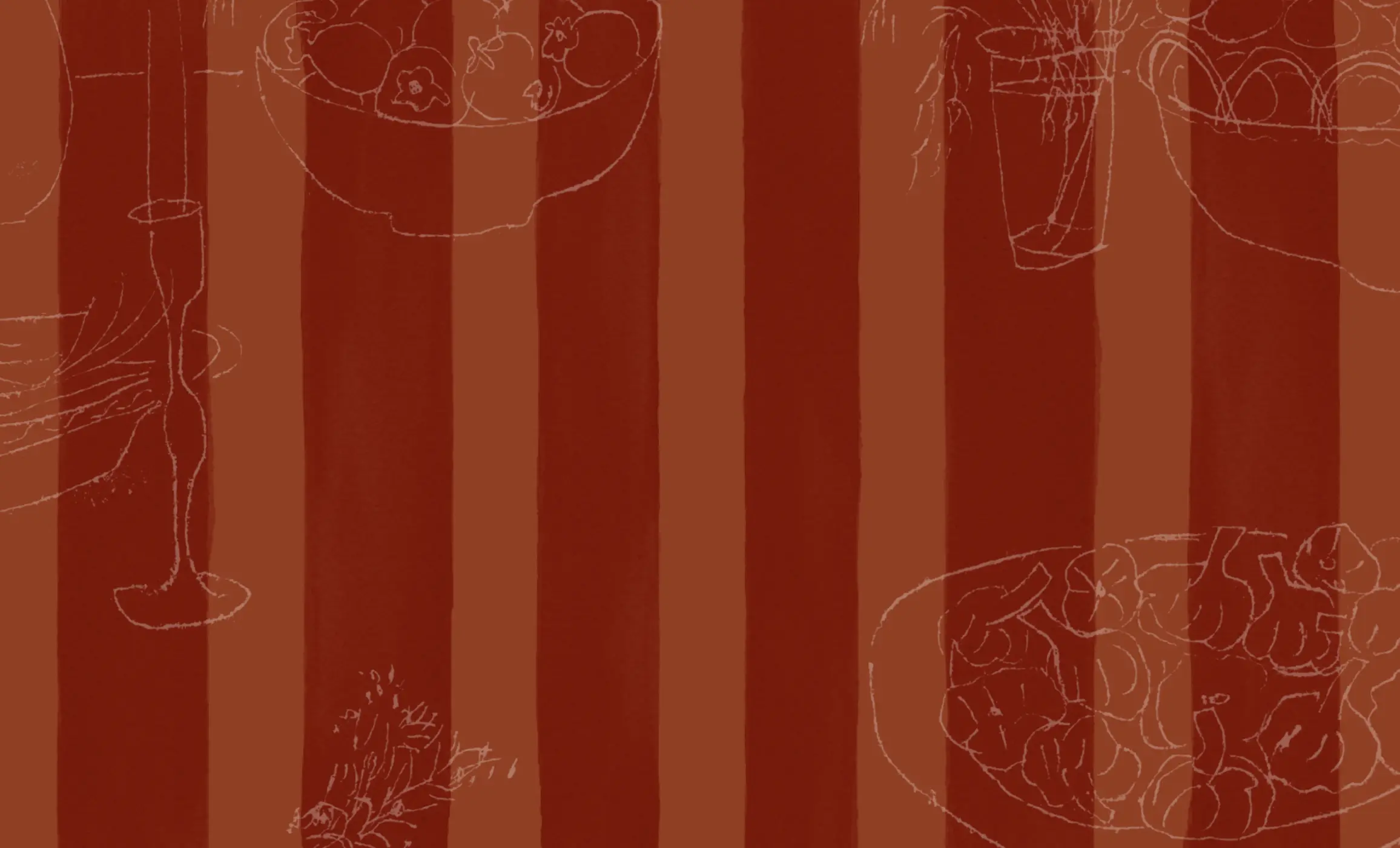
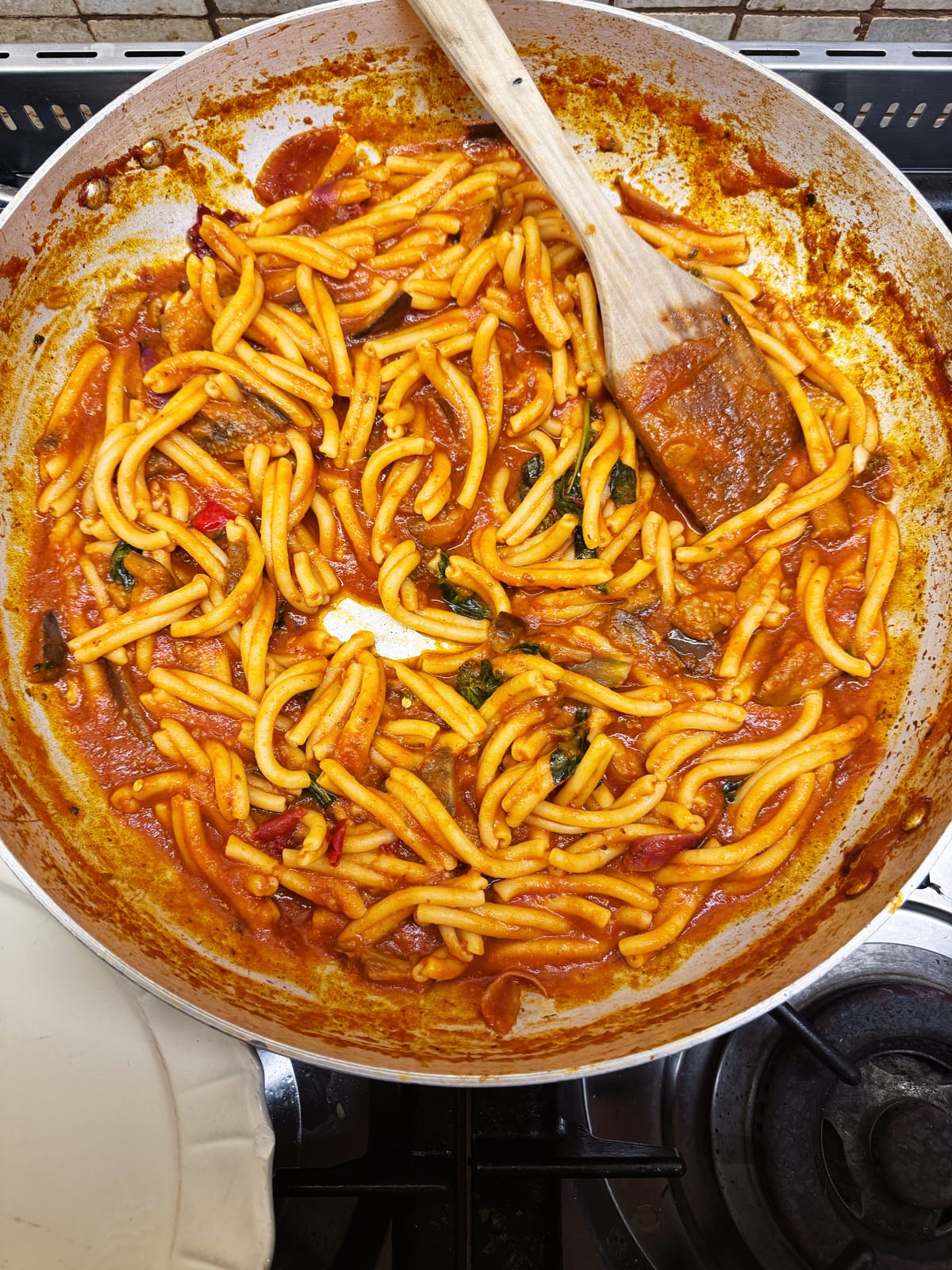
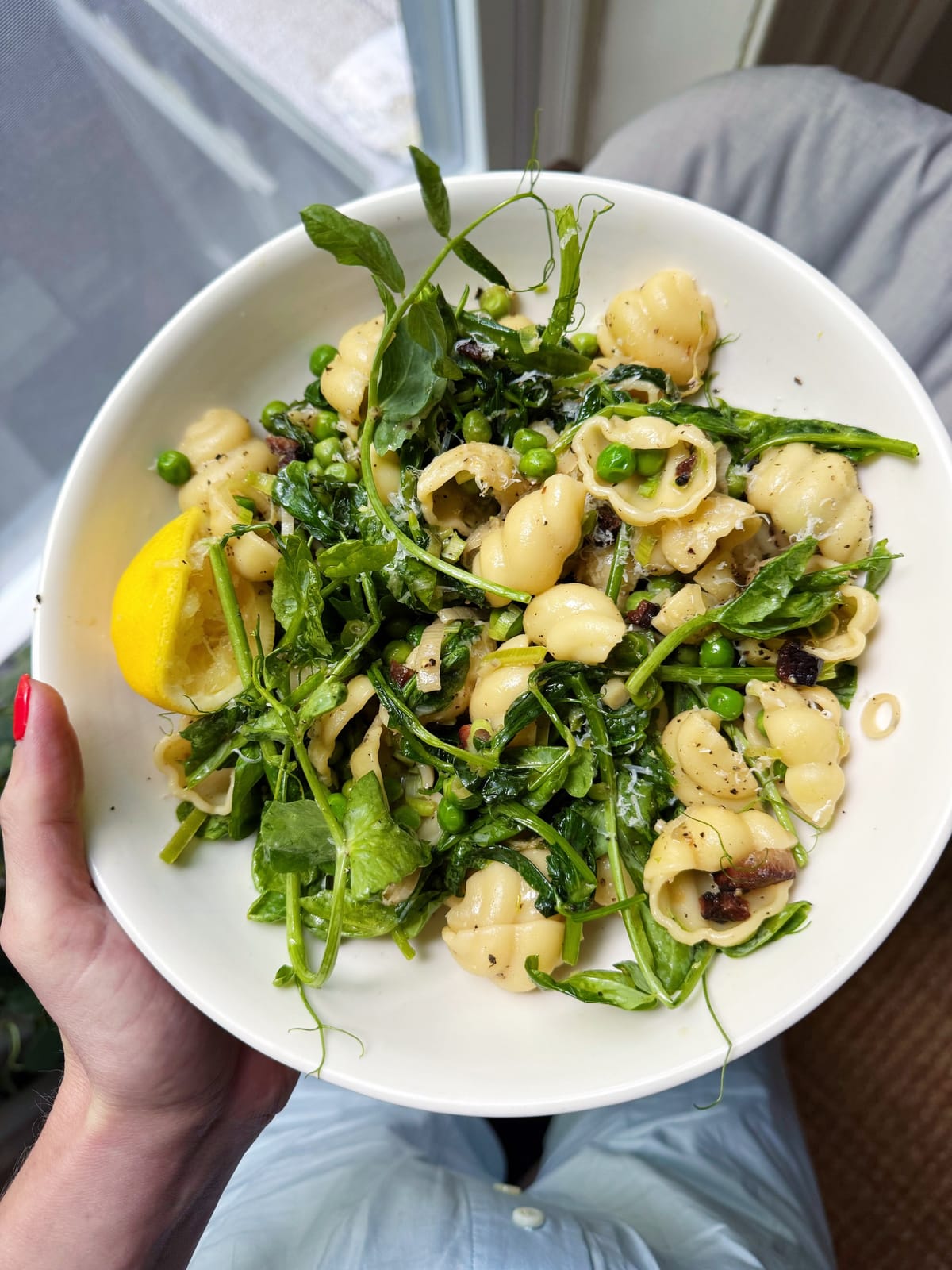
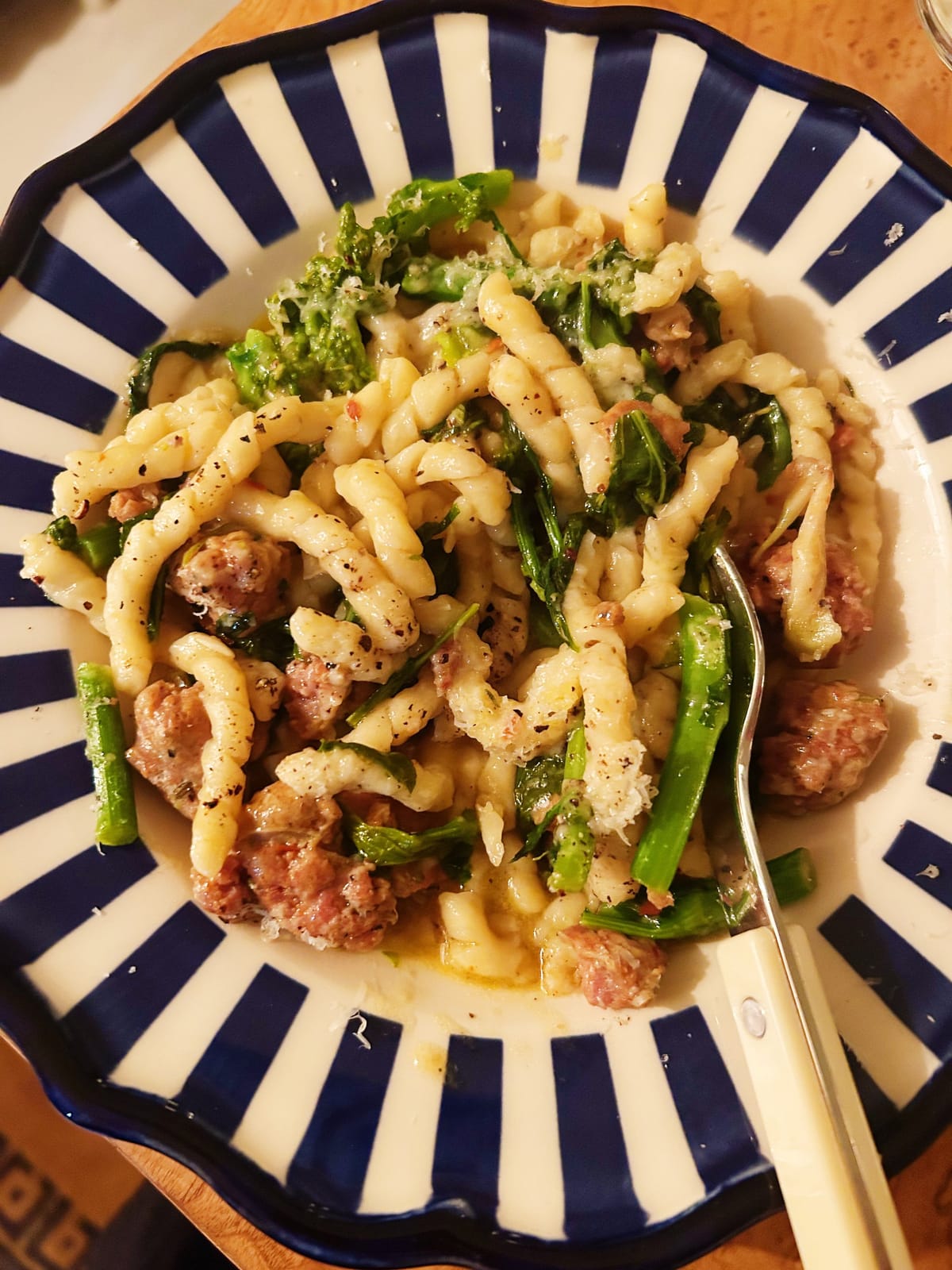
Discussion